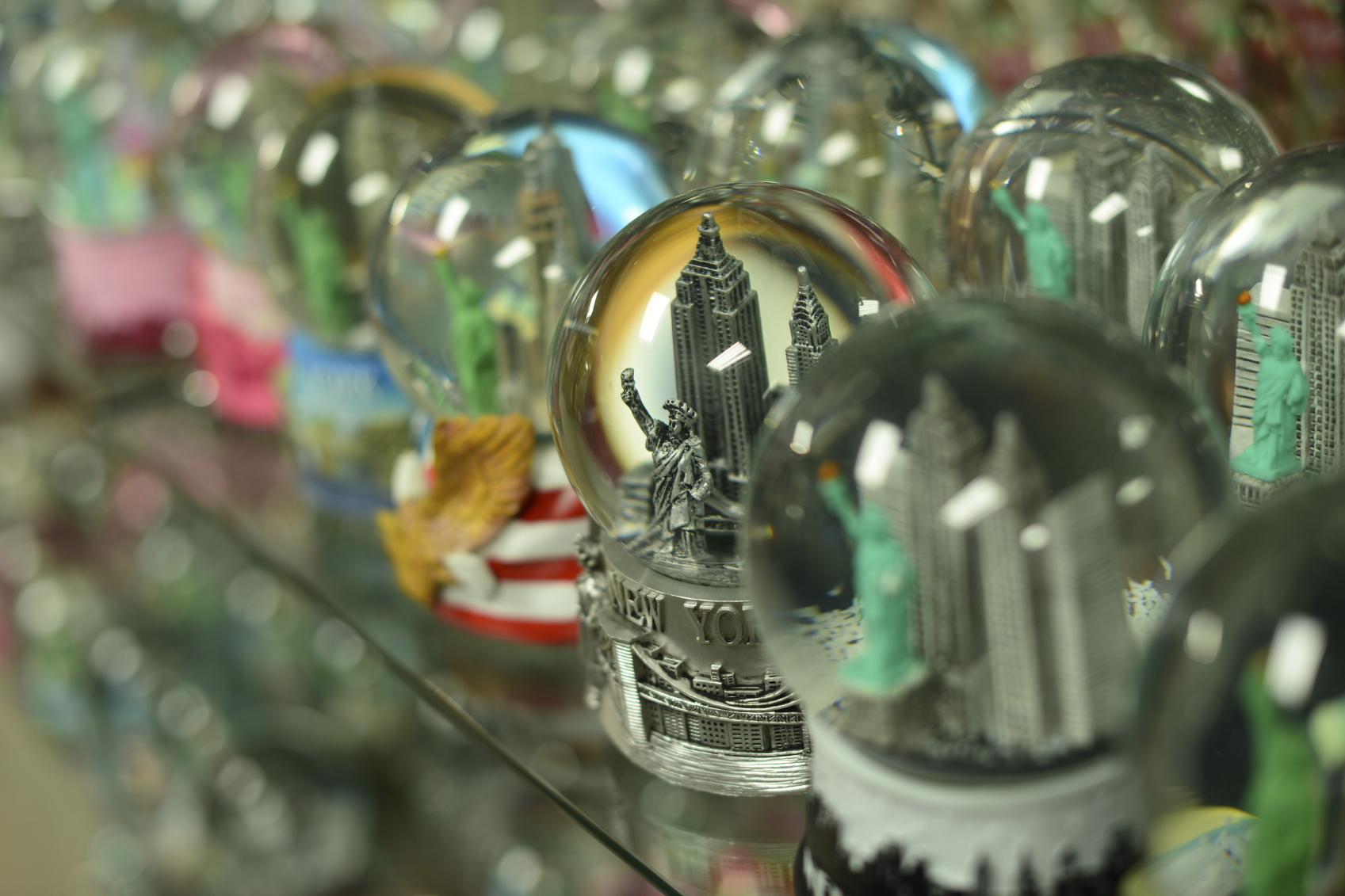7 accidental inventions
From The Idea Factory, our special report on innovation


Good things can come out of failure, misfortune, or just happenstance. Here are seven innovations that took the world, and their discovers, by surprise.
1. Worcestershire sauce
The exact details of this story are disputed by historians, but here is the official Lea & Perrins version: John Lee and William Perrins were "chemists" (one of those things you could just decide that you were in 1823 Worcester, England). A nobleman brought them a sauce recipe he'd found in Bengal and asked them to make it. They did, saving a bit for themselves, too. And, as you can see for yourself by looking at the ingredients on any bottle (onions, anchovies, vinegar, garlic, a strange African pod called tamarind), it was disgusting. Still, they had filled a barrel with the stuff and decided to keep it in the basement instead of dumping it out. Years later, when they finally got around to throwing out their rotted fish juice, they inexplicably tasted it first. Lea & Perrins Worcestershire sauce was born, and still thrives, 170 years after the first bottle made it to American shores.
The Week
Escape your echo chamber. Get the facts behind the news, plus analysis from multiple perspectives.

Sign up for The Week's Free Newsletters
From our morning news briefing to a weekly Good News Newsletter, get the best of The Week delivered directly to your inbox.
From our morning news briefing to a weekly Good News Newsletter, get the best of The Week delivered directly to your inbox.
2. Anesthesiology
In the good old days of the early 1800s, you could have a drug-fueled rave and never worry about cops breaking up the party. It was a fashion in those days to have "ether frolics" or "laughing gas parties." Sometimes professors (whose credentials, again, were limited to the ability to spell the word "Professor" in front of their own names) would travel around showing the effects of nitrous on volunteers. The volunteer would act goofy and everyone would laugh while witnessing "a miracle of science." Gardner Q. Colton was one of these "Professors." He doped Samuel Cooley, a volunteer, who got violent and cranky instead of silly. He tripped and gashed his shin, which bled profusely. But he neither noticed or cared, nor remembered being hurt when the gas wore off. Dentist Horace Wells was at the demonstration that night, and what he saw began the field of anesthesiology as we know it. (Unless you ask any of the other men — Humphry Davy, Joseph Priestly, Crawford Long, TG Morton, or Charles Jackson — who claimed, with reasonable evidence, to have discovered the anesthetic properties of nitrous first.)
3. Dry cleaning
In 1825 Paris, Jean Baptiste Jolly's wife had a very nice, very delicate tablecloth. Jean-Baptiste spilled an oil lamp on it. He scrubbed at it a bit, and when the oil, a kind of turpentine, evaporated, that part of the tablecloth was incredibly clean. Turpentine could dissolve the chemical bonds of many stains that water could not. So Jolly, who was a cloth dyer by trade, opened the first "nettoyage à sec", or "dry cleaning" business. Liquid was used, but not water. Of course, no matter how pretty your silk and peacock feather chamois may be, the purpose is quite defeated if it smells like turpentine (which it did), and is as flammable as…a peacock feather soaked in turpentine. Soon other, less offensive and fatal chemicals came to replace turpentine. The (much refined) process is still in use today.
A free daily email with the biggest news stories of the day – and the best features from TheWeek.com
4. Credit cards
The story goes (and some say it's exactly that) that Frank McNamara, an executive at the Hamilton Credit Corporation in 1949, was embarrassed to find himself short of cash when it came time to settle up a dinner with clients at a fancy New York restaurant. "Charge accounts" were already a common thing all over the country, allowing customers to add up a tab at certain establishments and pay it later. But those accounts were only for those specific businesses. McNamara had the idea of making a card which could be used at multiple unconnected high-class New York restaurants. Diners Club would pay the restaurant, and the diner would pay Diners Club, plus interest. On Diners Club's first anniversary, it had 20,000 members who could use it to pay for services at 28 restaurants and two hotels.
5. Snow globes
The Industrial Revolution was really hopping by the turn of the 20th century. Patents poured into offices around the world, at a time where just about anyone with any basic grasp of mechanics could become an inventor. Austrian Erwin Perzy already had an important job; he was a mechanic for surgical equipment. But he was fascinated by the new electric light bulb. It was a wonder of science, but, in 1900, it was also very, very dim. Perzy knew of a trick cobblers used to increase light for their work: Put a globe of water in front of a candle to increase the intensity of light in a small area. Perzy was trying to make a fixture that could do this with the light bulb. At some point in his experiments he poured cream-of-wheat, a preferred baby food of the time, into his water bulb, and was impressed how the cereal fell lightly like snow. Eventually he gave up on his light magnifier, and in 1905, created the company now known as Original Vienna Snow Globes. Each little water globe featured a church diorama and a snowfall you could summon with a flick of your wrist. (For the first 40 years, until Perzy's son took over, the diorama was always a church).
6. Brandy
At least two things were needed before brandy could be made. First, the Western world had to learn how to distil alcohol. Then, international trade had to become a thing, with ships carrying heavy cargo across oceans to far away countries and colonies. First, brandy was supposed to just be wine. But, as the story goes, a Dutch trader in the 16th century got clever and distilled his wine shipment down to a sweet heavy concentrate. This would save weight, space, and money. He intended to add water to the liquid upon arrival to his destination. But when the casks were opened, everything about the "wine" had changed. They called it "bradwijn" (burnt wine), and it was much more popular that watered down real wine could ever hope to be.
7. Paper
I use the word "paper" to specifically represent the kind made from pulped wood. Papyrus, fabric, skins, stone, even blocks of wood itself…all these and more have served as a surface to write on throughout history. Because these "papers" were difficult to make, written missives were rare. In the 1600s, Europeans made their paper from old cloth (and would experience a supply boom every time a plague swept the continent). But then, in the early 18th century, a man took a walk in the woods and changed the world.
A young French mathematician named Rene Antoine Ferchault de Reaumur was walking in the woods and came across a wasp's nest. To the great benefit of Western Civilization, he didn't run away. He watched them. Then he locked himself away for months, studying what he'd seen and bringing forth the practical applications for it. He then held a presentation at the French Academy of Sciences to reveal that mankind no longer need be a slave to how much cloth was available so they could make paper. They could use a far more abundant resource, do it faster, and in mass quantities. Just like the paper wasp did, when it chewed off a bit of tree, spit it out the pulp, and let it dry into, well, paper. Reaumur didn't run any further with the idea, but other innovators quickly did, and wood pulp paper took the world over.
Therese O'Neill lives in Oregon and writes for The Atlantic, Mental Floss, Jezebel, and more. She is the author of New York Times bestseller Unmentionable: The Victorian Ladies Guide to Sex, Marriage and Manners. Meet her at writerthereseoneill.com.
-
 Shots fired in the US-EU war over digital censorship
Shots fired in the US-EU war over digital censorshipIN THE SPOTLIGHT The Trump administration risks opening a dangerous new front in the battle of real-world consequences for online action
-
 What will the US economy look like in 2026?
What will the US economy look like in 2026?Today’s Big Question Wall Street is bullish, but uncertain
-
 Alaa Abd el-Fattah: should Egyptian dissident be stripped of UK citizenship?
Alaa Abd el-Fattah: should Egyptian dissident be stripped of UK citizenship?Today's Big Question Resurfaced social media posts appear to show the democracy activist calling for the killing of Zionists and police
